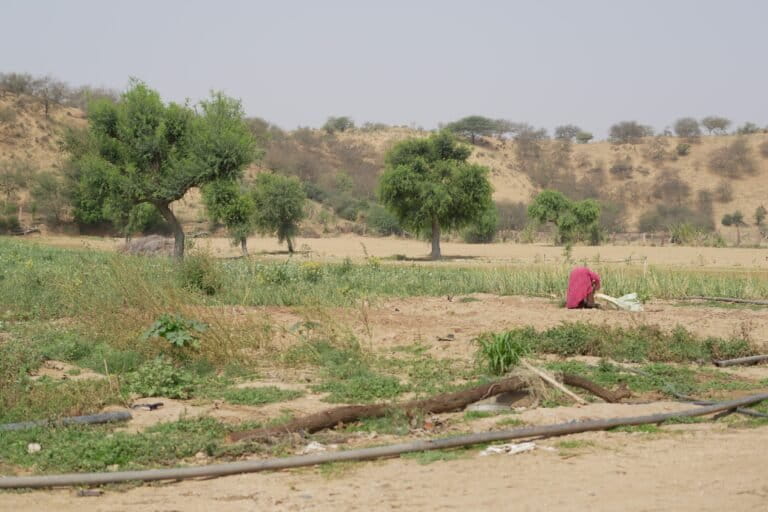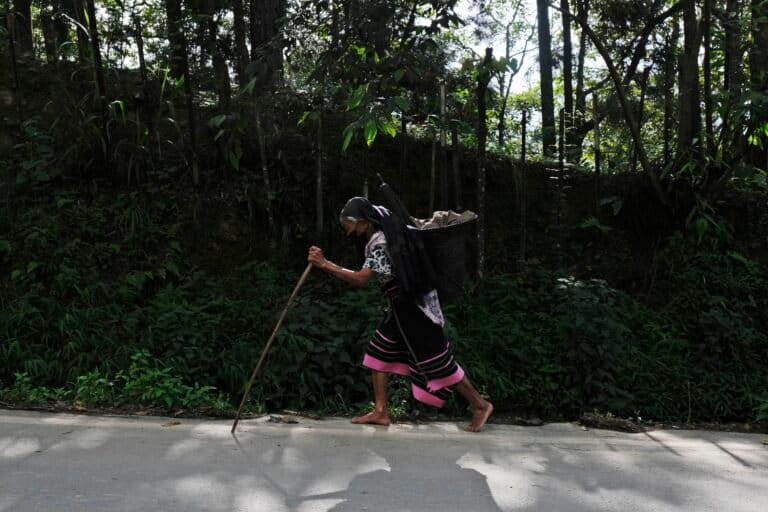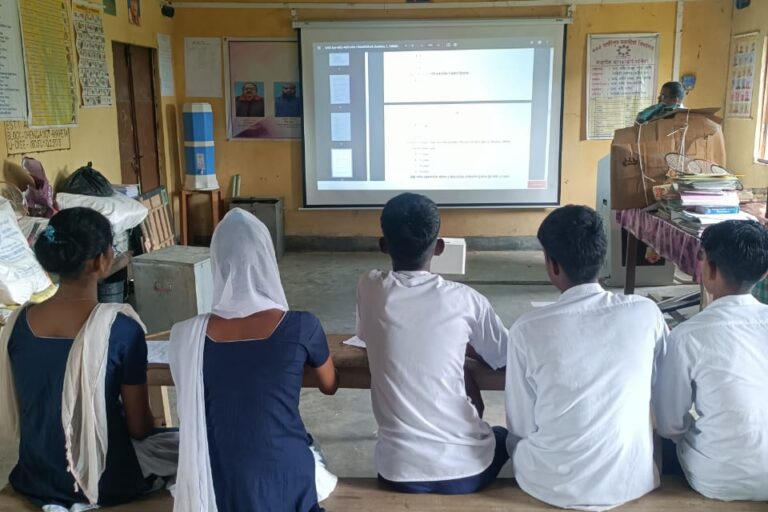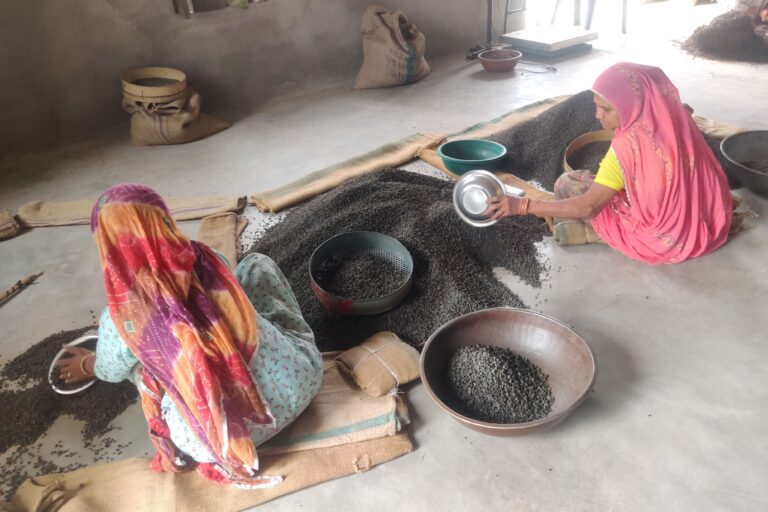- Important populations of the blackbucks exist in Chennai. However, their population has seen a staggering decrease over the years. Recently, about 20 deaths were reported in five months.
- Natural grasslands replaced with manicured non-native grass and a domination of the landscape by invasive plants like Prosopis juliflora, have limited the space available for the blackbucks to live and breed, which has resulted in deaths and health disorders.
- Strict implementation of the policy regarding removal of invasive species in natural landscapes will aid in improving the blackbuck numbers, which is an endangered species listed in Schedule I of the Wildlife (Protection) Act 1972.
- The views in this commentary are that of the authors.
In April 2022, news organisations in Tamil Nadu reported a sudden decline in the blackbuck population within the Raj Bhavan campus in Chennai – a staggering 20 deaths in five months. These deaths have been attributed to starvation caused by the transformation of the grasslands into manicured lawns of Mexican grass closer to the buildings and elsewhere due to the invasion of trees. These deaths bring into spotlight, the complexities in the conservation of urban biodiversity.
Urban ecologists flag that cities have, for years, served as a complex and diverse mosaic of unconventional habitats. Although rapid and unchecked urbanisation is a threat, cities harbour significant biodiversity and play a key ecological role with surrounding landscapes.
The species that inhabit cities also adapt to their new surroundings. The first ever study on urban fishing cats of Colombo illustrates this, as the study author follows how the species is adapting in a changing city. Closer home in India, many large educational campuses across the country serve as a refuge for biodiversity.
Blackbucks in Tamil Nadu
Blackbuck (Antilope cervicapra) is the most widely distributed of antelopes in India, occurring in dry parts of the country. Estimates suggest that there could be around 40,000 blackbucks in the wild. It has been introduced into parts of the United States of America, where there is a large population thriving in Texas.

In Tamil Nadu, blackbuck populations are scattered, and the species occurs locally in many places across the state. Important populations are those present in Chennai (Guindy National Park-Indian Institute of Technology Madras-Raj Bhavan Complex), Erode (Satyamangalam Tiger Reserve), Nagapattinam (Point Calimere Wildlife Sanctuary) and Thoothukudi (Vallanadu Blackbuck Sanctuary). Besides these, there are small numbers of blackbucks in the Chengalpattu district, in Thayyur.
Species history in Chennai
Some sources say that the blackbuck was introduced in the Guindy National Park-IITM-Raj Bhavan Complex in 1924, by the then Governor of the Madras Presidency. This would mean that the blackbuck’s history in Chennai spans less than 100 years.
While we do not have information on the number of individuals and the source of this founder population, what we do know is that the habitat of the landscape was starkly different at that time. The vegetation was sparse with a domination of the Palmyra palm (Borassus flabellifer), a habitat ideal for the blackbuck. Over the years, planting of trees and the invasion of alien species such as Prosopis juliflora (Seemai karuvelam in Tamil) has transformed the habitat into a tropical woodland. These woodland habitats are not suited to the blackbuck. However, the spotted deer (Axis axis) which co-exists with the blackbuck, in this landscape, is better adapted to the woodland habitat and as a result, is more numerous.
In 1969, the 11th Technical Meeting of IUCN held in New Delhi, reported 625 blackbucks in the Guindy National Park based on surveys conducted in 1968. Although this report does not state the methodology involved in arriving at this number, it is taken as a benchmark in the absence of any other historic data. Most recent estimates of blackbucks in the Guindy National Park-IITM-Raj Bhavan Complex suggest that there could be around 100 animals. What has caused the six-fold decline of the species in Chennai?
The recovery over the years
In 2006, the blackbuck population within the IIT Madras campus had declined to a point of near extinction. A study by Care Earth Trust, an organisation that works to provide scientific services in biodiversity, that focused on species recovery and campus biodiversity, revealed that there were around 12 blackbucks left and their grassland habitats had almost disappeared.
The colonial legacy classification of grasslands as ‘wastelands’ that continues to guide planning and decision-making in India had taken its toll in the IIT Madras campus too. Blackbucks looking for grass forage closer to the roads and buildings where they come into conflict with stray dogs and face the risk of being hit by speeding vehicles.

The Care Earth Trust study identified and mapped the blackbuck habitats and based on its recommendations, special attention was paid to improving the quality and connectivity of these habitats. Habitat management led to the species recovery and within the next two years, the population rose to over 20 and by 2013, it had reached 34. From 2006 to 2019, Care Earth Trust was engaged in continuous monitoring and periodical counting of the population. Although there have been fluctuations, the blackbuck population had stabilised to around 25 in the year 2019.
Habitat islands
The Intergovernmental Science-Policy Platform on Biodiversity and Ecosystem Services (IPBES) in its 2019 Global Assessment report flags rapidly changing land use due to urbanisation as one of the key threats to biodiversity. In its recommendations to build sustainable cities, the report notes that while increasing green cover is one way forward, it is also equally important to safeguard key urban biodiversity areas. This is to be done by ensuring that these areas do not become isolated due to change in land use of surrounding lands and by ensuring ecological connectivity.
Contradicting this, in Chennai we observe that the blackbuck habitat has been reduced to habitat islands and the species is surviving precariously. For the past 40 years or so, the blackbucks of IIT Madras are isolated from the Guindy National Park-Raj Bhavan population by a wall. In addition, within the IIT-M campus, grasslands have been reduced to small islands due to extensive construction of buildings and the proliferation of trees, many of which are alien, mostly dominated by Prosopis juliflora.
Read more: A cluster of villages conserve shy blackbucks in Odisha’s Ganjam
A unique mating system called ‘lek’ is known in the blackbucks. Males during the breeding season are known to defend up to five hectares of territory. The grassland habitats of the species must be sufficiently large for the animals to behave naturally. This means that reduced territory due to habitat islands could lead to reduced breeding success. These factors could have also resulted in inbreeding within the IIT-M campus, the result of which there have been at least three instances of albinism (absence of melanin) – two males and a female observed since 2006.

In recent times, awareness of the many dangers of the proliferation of invasive alien species has gained ground. The Madras High Court has, through an order, directed the state government to eradicate the invasive species from all natural habitats, waterways and wetlands. In turn, the state’s Department of Environment, Forests and Climate Change has prepared and adopted a policy note on eradication of invasive species from Tamil Nadu. Strict implementation of the policy, including in Chennai, will certainly improve the quality of the blackbuck habitat and its long-term survival.
The blackbuck is an endangered species listed in Schedule I of the Wildlife (Protection) Act 1972. This means that on paper, it enjoys a conservation status that is on par with the tiger. However, this is far from reality on ground. Greater awareness on the biology of the species and conservation of its grassland habitats will go a long way in the conservation of the blackbuck.
R. J. Ranjit Daniels is an ecologist with Care Earth Trust; Anjana Vencatesan is a researcher with Care Earth Trust.
Banner image: An adult male blackbuck in the IIT Madras campus. Photo by B Vinoth, Care Earth Trust.













